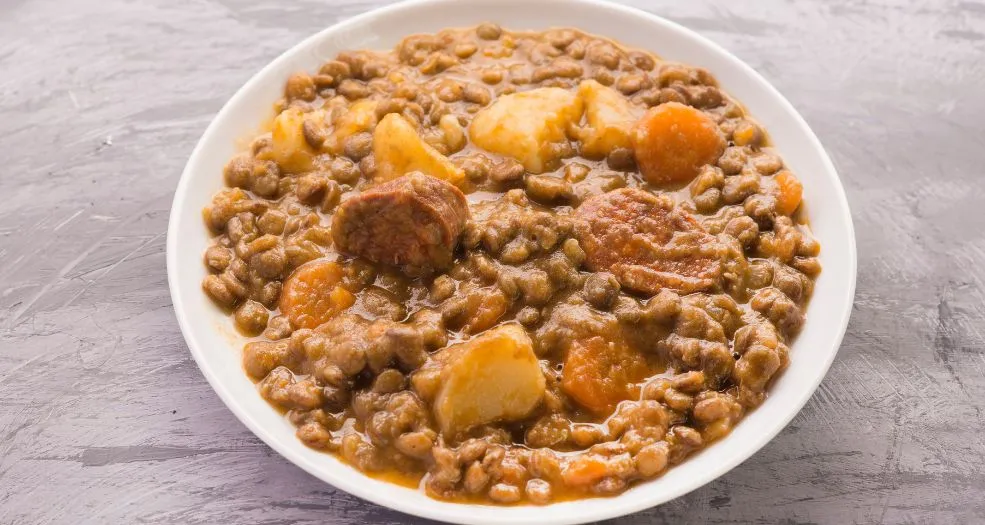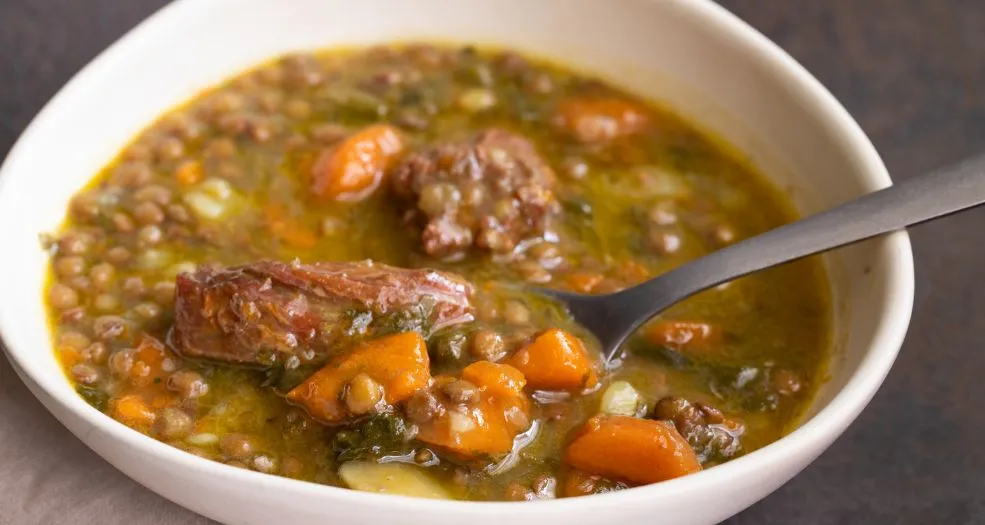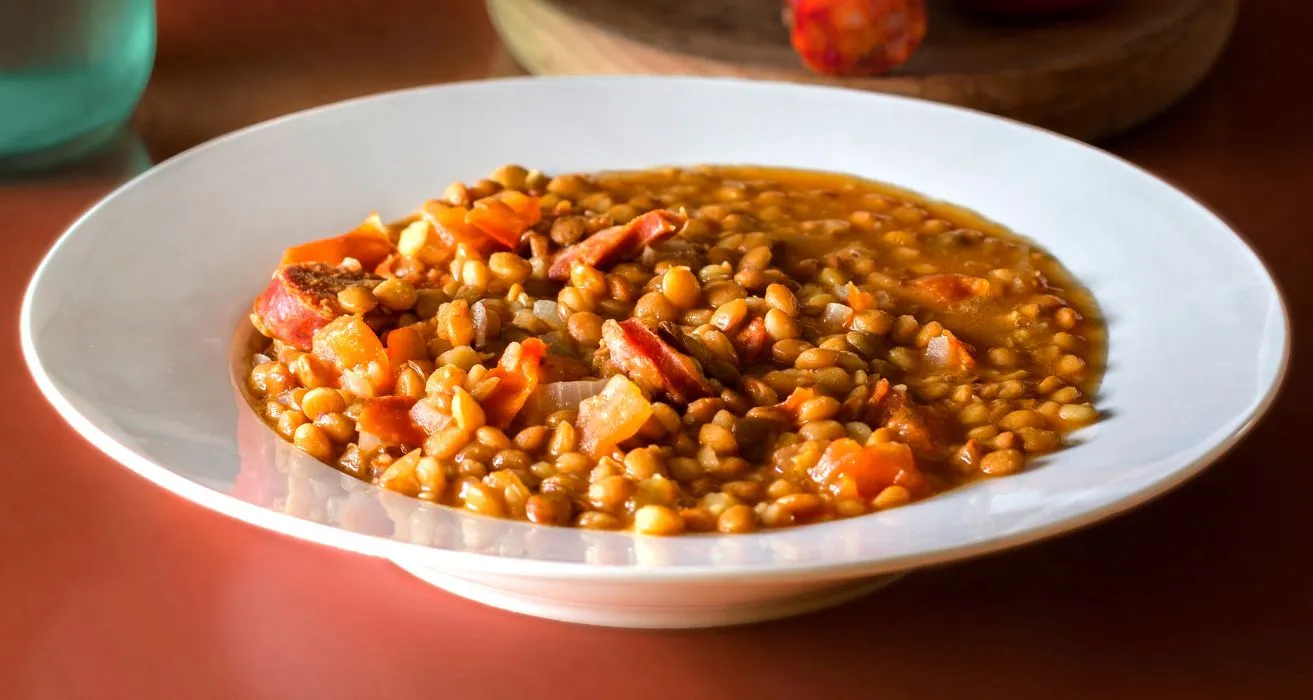Embarking on a culinary journey through the heart of Mexican cuisine brings us to a humble yet profoundly flavorful dish – lentejas. This traditional lentil soup, steeped in history and culture, offers not only comfort and warmth but also a wealth of nutritional benefits. In this comprehensive guide, we’ll explore the multifaceted world of lentejas, from its rich ingredients and health perks to the art of cooking and serving this beloved meal. So, buckle up as we dive deep into the essence of lentejas, ensuring your next cooking adventure is both delicious and enlightening.
Introduction
The Essence of Lentejas
Lentejas, or Mexican lentil soup, stands as a testament to the simplicity and richness of traditional Mexican cuisine. It’s a dish that marries the earthy tones of lentils with the vibrant flavors of fresh vegetables and spices. This soup isn’t just a meal; it’s a celebration of culture, an everyday staple that has nourished families for generations.
A Brief History and Cultural Significance
The roots of lentejas stretch back to the ancient world, with lentils being one of the earliest crops domesticated in the Near East. Brought to the Americas by Spanish colonizers, lentils found a new home in Mexican soil. Over time, lentejas evolved, incorporating local ingredients and flavors, becoming a beloved comfort food across the country. It symbolizes the blending of cultures, a savory reminder of Mexico’s rich and diverse culinary history.
Understanding lentejas offers more than just a recipe; it provides insight into the heart of Mexican family life and traditions. As we delve into the ingredients, nutritional value, and preparation of lentejas, we’ll uncover the layers of history and love that make this dish a timeless treasure in Mexican cuisine. Let’s embark on this flavorful journey, embracing the warmth and comfort of lentejas.
Ingredients and Nutritional Value
Ingredients of Lentejas
The beauty of lentejas lies in its simplicity and the wholesome goodness of its ingredients. At its core, this dish features lentils – brown or green, known for their earthy flavor and hearty texture. They’re accompanied by a colorful array of vegetables: carrots, for a touch of sweetness; potatoes, adding heartiness; and tomatoes, onions, and garlic, forming a robust foundation of flavor. Spices like black pepper and Mexican oregano infuse the soup with depth, while a hint of jalapeño introduces a gentle heat.
Substitutions are welcomed in this versatile dish. For instance, red lentils can replace brown or green ones for a different texture. Vegetable broth can make the dish vegetarian, and adding spices like cumin or coriander can adjust the flavor profile to suit personal tastes.
Nutritional Value of Lentejas
Lentejas is not just a feast for the senses; it’s a powerhouse of nutrition. Lentils, the star of the dish, are rich in protein, making them an excellent meat alternative. They’re also packed with fiber, which aids digestion and keeps you feeling full longer. The vegetables add essential vitamins and minerals: carrots are high in vitamin A, potatoes supply potassium, and tomatoes offer vitamin C.
Moreover, lentejas is low in fat and calories, making it a healthy choice for anyone looking to maintain a balanced diet. It’s a dish that provides energy, supports bodily functions, and contributes to overall well-being.
In the next section, we’ll dive into the heart of cooking lentejas, guiding you through each step to ensure your soup is not only nourishing but also irresistibly delicious. Stay tuned as we continue our culinary exploration, bringing the rich flavors of Mexico to your kitchen.
Cooking Lentejas
Preparing the Ingredients
The first step to a delicious lentejas is selecting high-quality ingredients. For lentils, ensure they’re fresh and free from any stones or debris. Rinse them under cold water to remove any dust. For the vegetables, choose ones that are ripe and vibrant in color, as they’ll lend the most flavor to your soup.

Step-by-Step Lentejas Cooking Guide
Cooking lentejas is a journey of building flavors, layer by layer. Here’s a detailed guide to help you master this dish:
Ingredients
- 1 cup brown or green lentils, rinsed
- 3 medium carrots, diced
- 1 large russet potato, diced
- 2 Roma tomatoes, quartered
- 1 medium onion, chopped
- 1 jalapeño pepper, seeded and chopped (optional)
- 2 cloves garlic, minced
- ¾ teaspoon kosher salt
- ¼ teaspoon black pepper
- ¼ teaspoon dried Mexican oregano
- 5 cups chicken or vegetable broth
- 1 tablespoon olive oil
- Fresh cilantro, for garnish
Directions
- Sauté the Vegetables: In a large pot, heat the olive oil over medium heat. Add the carrots and sauté for about 3 minutes, until they start to soften.
- Blend for Flavor: Combine the tomatoes, onion, jalapeño (if using), garlic, salt, black pepper, and Mexican oregano in a blender. Blend until smooth.
- Combine and Simmer: Pour the blended mixture into the pot with the carrots. Add the broth, lentils, and potato. Stir to combine.
- Cook the Lentils: Bring the mixture to a boil, then reduce the heat to low. Cover and simmer for about 30 minutes, or until the lentils and potatoes are tender.
- Final Touches: Once the lentils are cooked, adjust the seasoning to taste. Serve hot, garnished with fresh cilantro.
Cooking lentejas is as much about the process as it is about the ingredients. The blending of tomatoes and spices creates a base that’s rich in flavor, while the slow simmering allows the lentils and vegetables to become tender and absorb the aromatic broth.
As we move on, we’ll explore the best ways to serve and enjoy lentejas, enhancing this classic dish with complementary sides and toppings. Stay tuned for more tips and tricks to make your lentejas experience truly unforgettable.
Serving and Pairing
Serving Suggestions
Once your lentejas is ready, the presentation can make it even more inviting. Serve it in a deep bowl to showcase its rich colors and textures. A sprig of fresh cilantro on top adds a pop of color and a hint of freshness.
Pairing with Sides and Toppings
The versatility of lentejas means it pairs wonderfully with a variety of sides and toppings. Here are a few ideas to elevate your meal:
- Tortilla Chips or Warm Flour Tortillas: The crunch of tortilla chips or the softness of warm flour tortillas complements the soup’s texture.
- Queso Fresco or Cotija Cheese: A sprinkle of these cheeses adds a creamy, salty contrast.
- Sliced Avocado: For a dose of healthy fats and a creamy texture, top your lentejas with fresh avocado slices.
- Lime Wedges: A squeeze of lime juice can brighten the flavors and add a zesty kick.
Experimenting with different combinations can turn each serving of lentejas into a unique experience. Whether you’re enjoying a cozy dinner at home or entertaining guests, these pairings can cater to various tastes and preferences.
In the next section, we’ll delve into the practical aspects of storing and reheating lentejas, ensuring you can savor this delightful soup without compromising on taste or texture. Stay tuned for more insights to make your culinary journey with lentejas as smooth and enjoyable as possible.
Storing and Reheating
Storing Lentejas Leftovers
Lentejas, with its robust flavors, actually tastes better the next day, as the ingredients have more time to meld together. To store leftovers, let the soup cool down to room temperature before transferring it to an airtight container. It can be refrigerated for up to 5 days. For longer storage, freeze the lentejas in freezer-safe containers for up to 3 months. Thaw overnight in the refrigerator before reheating.

Reheating Tips
To reheat lentejas, pour the desired amount into a pot and warm it over medium heat, stirring occasionally. If the soup has thickened in the fridge, add a bit of water or broth to reach your preferred consistency. Taste and adjust the seasoning if necessary, as flavors can mellow during storage. Avoid boiling the soup vigorously, as this can make the lentils mushy.
Reheating lentejas properly ensures that every bowl is as comforting and flavorful as the first. Whether enjoying a quick weekday meal or savoring leftovers, these tips will help you make the most of this versatile and nutritious dish.
In our final section, we’ll address some frequently asked questions about lentejas, providing you with additional insights to perfect your cooking and serving techniques. Stay tuned for this informative wrap-up, designed to enhance your appreciation and mastery of this classic Mexican soup.
FAQs
What is Lentejas made of?
Lentejas is crafted from a nourishing blend of lentils, vegetables (like carrots, potatoes, and tomatoes), and spices. This combination is simmered to perfection, creating a hearty and flavorful soup.
What does Lentejas help with?
Thanks to its high fiber and protein content, lentejas aids in digestion, supports heart health, and can help manage blood sugar levels. It’s a wholesome choice that contributes to overall well-being.
Is lentil soup OK?
Absolutely! Lentil soup is a nutritious and versatile dish, suitable for various dietary needs. It’s packed with essential nutrients, making it a healthy option for any meal.
How long does it take to cook lentils?
Cooking time for lentils varies depending on the type. Brown or green lentils typically take about 20-30 minutes to become tender, while red lentils may cook in about 15-20 minutes.
What is lentils called in English?
In English, lentils are known simply as “lentils.” This term encompasses various types, including brown, green, red, and black lentils, each with its unique texture and flavor profile.
Is lentil good or bad for you?
Lentils are incredibly good for you. They’re a rich source of plant-based protein, fiber, and minerals like iron and potassium, making them a valuable addition to any diet.
Can I eat lentils everyday?
Yes, incorporating lentils into your daily diet can be beneficial, thanks to their high nutrient content. However, it’s essential to maintain a balanced diet by varying your food choices.
Can you eat raw lentils?
No, lentils should not be eaten raw due to natural toxins that can be harmful. Cooking lentils thoroughly neutralizes these toxins and makes them safe to consume.
Are lentils the healthiest food?
Lentils are among the healthiest foods you can eat. They’re low in calories, high in nutrition, and a great source of protein and fiber, contributing to a healthy diet.
Are lentils good for skin?
Yes, the antioxidants and vitamins in lentils can contribute to healthy skin by combating free radicals and supporting skin renewal.
Is lentils protein or carbs?
Lentils contain both protein and carbs. They’re an excellent source of plant-based protein while also providing complex carbohydrates and dietary fiber.
Are lentils a superfood?
Given their rich nutrient profile and health benefits, lentils can indeed be considered a superfood. They’re a versatile, affordable, and delicious way to boost your nutrition intake.
Wrapping up our journey through the world of lentejas, we’ve explored its origins, nutritional benefits, cooking methods, and serving suggestions. This guide aims to inspire you to incorporate lentejas into your cooking repertoire, enjoying not just its flavors but also the health and cultural richness it brings to your table.
Conclusions:
This concludes our comprehensive guide to lentejas, a dish that is much more than just a staple of Mexican cuisine—it’s a nutritious, flavorful, and versatile meal that offers something for everyone. From its simple ingredients and significant health benefits to the art of preparing, serving, and enjoying this beloved lentil soup, we’ve covered everything you need to know to make lentejas a part of your culinary adventures.
We hope this journey has not only equipped you with the knowledge to cook this delicious dish but also inspired you to explore the rich tapestry of flavors and traditions that lentejas represents. Whether you’re looking for a comforting meal on a chilly evening, a nutritious option for your weekly menu, or a way to connect with Mexican culinary heritage, lentejas offers a perfect solution.
Remember, cooking is an art that allows for endless creativity and personalization. Feel free to experiment with the ingredients and flavors to make your version of lentejas that reflects your taste and dietary preferences. And most importantly, enjoy the process and the delicious results of your efforts.
Thank you for joining us on this flavorful exploration. May your kitchen be filled with the warmth and joy that cooking lentejas brings. Happy cooking!
